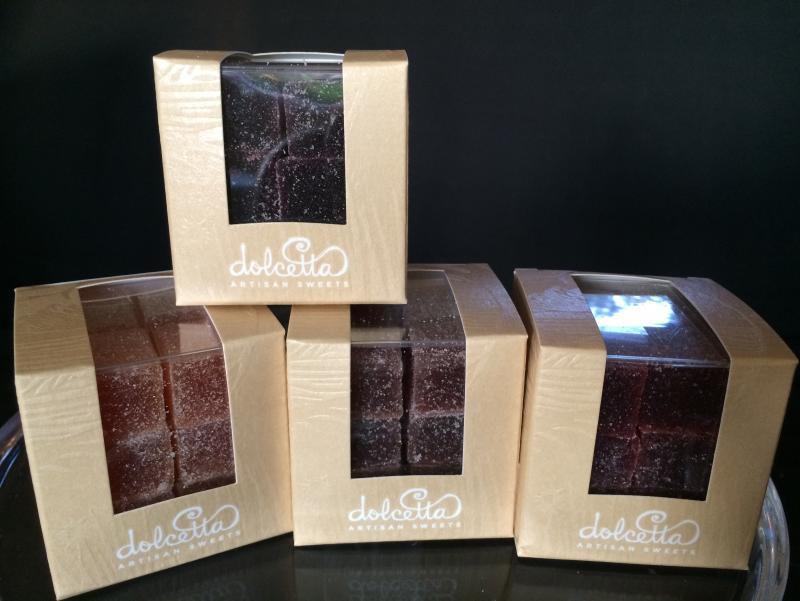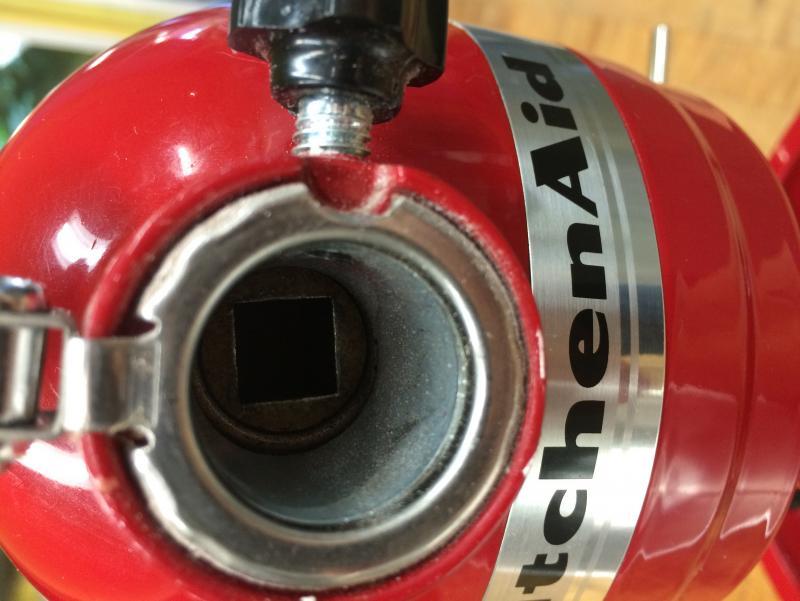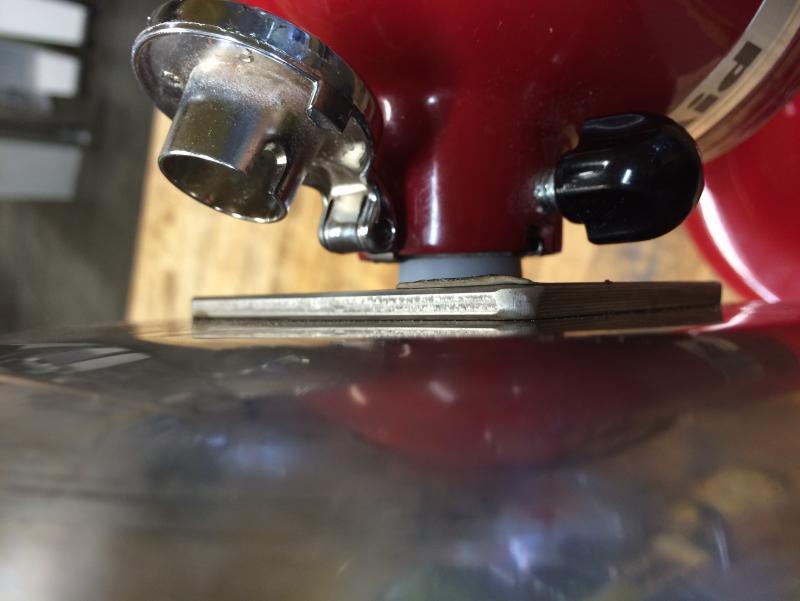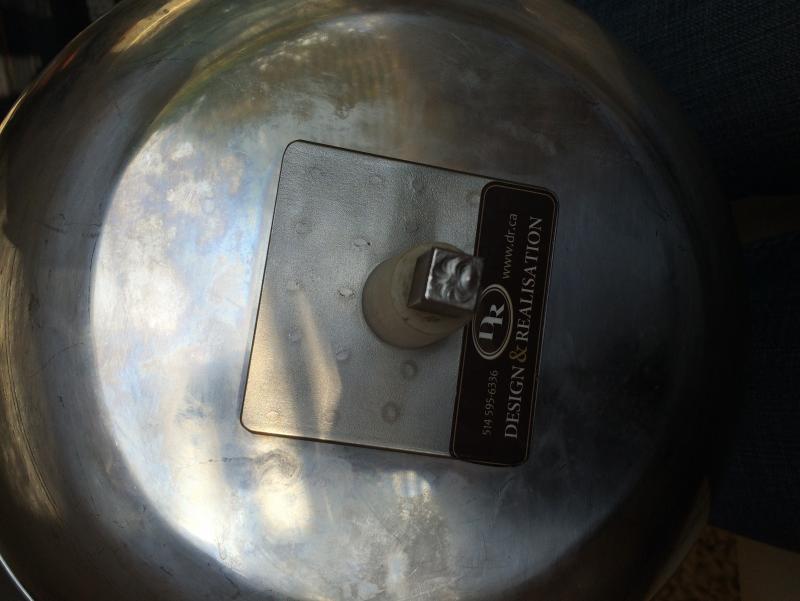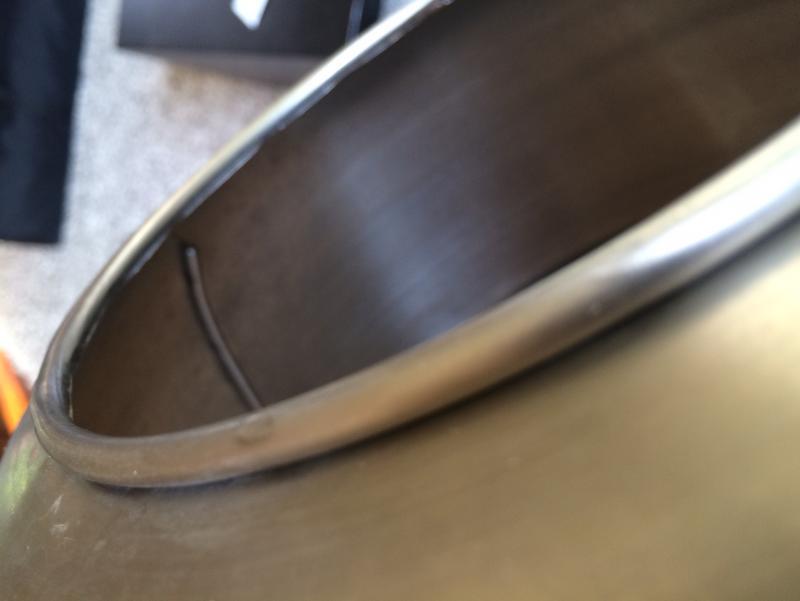-
Posts
4,052 -
Joined
-
Last visited
Content Type
Profiles
Forums
Store
Help Articles
Everything posted by pastrygirl
-
Tikidoc, I would aim for another 2-3 degrees C or 5-6 degrees F higher than originally cooked to firm them up, maybe a tiny bit more if they are really impossibly sloppy soft.
-
Every time you two talk about going North to Manitoulin, I picture you way up in the Yukon with polar bears and ice floes. Then I look at the map and realize I am still farther North than you! Clearly a West coast perspective on the North-ness of Canada Have a great trip!
-
I highly recommend pre-coating with caramelized sugar if only for the extra crunch and flavor it adds.
-
I don't know, but I'd like to help you eat it.
-
Thanks, Ruth and Kerry. Hard to believe its just that easy! I can't afford any more toys right now, but knowing this is out there is going to make me resent all the time I spend stirring and seeding. Oh well. Meanwhile, I propose we re-christen Kerry as the Chocolate Witch Doctor for coming up with this voodoo magic.
-
Couple more questions to understand how this changes production. Do you still have to melt your chocolate to 120f then cool it before adding the silk, or do you just melt it to 95f? Once the chocolate is tempered, does it behave the same as if you seeded it by hand and there is a few degree range where it is tempered and workable? It sounds like the working temp is higher, but is there the same few degree range? Currently I seed and temper by hand with either a 6kg melter or a bowl and bain marie. I keep an eye on the temp and warm it up with a hair dryer if it cools off or starts to thicken. Not doing all that stirring and waiting sounds fantastic, but will I have to re-learn how my couvertures act? Or is it really just that easy?
-
Nice! I can't wait to see what you make. I haven't gotten very far with panning, only did a few batches. One of them turned out pretty well, but mostly by accident, and I just coated them with cocoa instead of making them shiny. For me, chocolate covered nuts just did not sell, I'm not sure if they weren't sexy enough or what. I didn't really mind eating them all, but I haven't made any in a while.
-
Dammit, I wasn't going to read this thread because I knew it would make me want one. Seems like the EZ temper plus a couple of melters could replace a small but much more expensive tempering machine. That is, if the machine was only to be used for tempering and not with an enrobing line. Kerry, has this changed your habits with regard to your Selmi?
-
If you want to play with ratios and see how they affect firmness, use tempered chocolate and it will set up as firm as its going to get within an hour or so. Other fats have a softening effect on the cocoa butter, so the more peanut oil you add, the softer your gianduja.
-
I agree with Chocolat. You could change the ratios to yield a softer gianduja. I use 2:1 milk chocolate to peanut butter and it is firm enough to slab and almost too firm to cut - I've taken to filling my frames only 3/4 so I don't break guitar strings trying to force them through the last few rows (making a rectangle in square ganache frames, not a shallower square). Equal parts would be much softer, but still probably not as soft as ganache.
-
What are your ideas on how to do this? Do you have ideas for flavors you want to try? The easiest way to add flavor without texture is to add a fat based flavor, such as Lorann Oils. You can also vacuum pack chocolate pieces with strongly flavored ingredients like coffee beans until the chocolate absorbs the flavor. Nut pastes can be added directly to chocolate, resulting in gianduja. I think of infusing as what we do when we make tea or add aromatics to stock - steeping in liquid then straining. I know there are other ways to use the word, but I don't think of gianduja as an infusion, just a mix. I suppose there is no reason why you couldn't melt chocolate, add dry spices (or even tea) to infuse then strain out and temper.
-
I signed up for two outdoor weekly markets this summer, will be making lots of pate de fruits so I have something that won't melt! Flavors of the moment: nectarine, raspberry-apricot, blueberry-ginger (with some morello cherry puree because the blueberries were a bit insipid) and strawberry-rhubarb. Using fresh fruit may end up being a challenge... though that rarely stops me
-
I have a couple of those and did the same thing. I think as long as you're not bending them back and forth and weakening the metal you should be fine. I don't do much hand dipping though. I have a hard time with how thin the handles are, I feel like i need big clunky 'good grips' type handles to not make my hand go numb
-
Kerry asked me whether the Teflon bushing spins freely. It does. That part of the stem is round, only the end bit is square. The bushing fits 90% into the machine and is what the tightening screw holds onto.
-
Fillo - butter and stack 3 or 4 sheets, cut into squares, put buttered side down into mini muffin cups, bake until golden. Ok, so fillo isn't always quick and easy, but if you get a properly thawed box that behaves, its not terrible (true confession: I love fillo). You can use a gougere or choux puff like a mini bread bowl. A caterer I used to work with would fill gougeres with bolognese meat sauce for mini sloppy joes. How about new potatoes? Kind of retro, but at least gluten free - simmer small potatoes until tender, cut in half, use melon baller to scoop out a bowl. Would be good with smoked salmon. Narrow endive leaves are naturally cupped. Fill with goat cheese mousse. Can you bake prosciutto or pancetta in muffin cups until crispy? Like wonton skins, but pork... Are your fillings loose and saucy or needing to be baked in the vessel? Drier toppings can go on a potato chip or potato pancake, blini, round of polenta, etc.
-
I'll see if I can add a few pics to help you scheme The square bit on the end is about 10-1/2 mm square by 15 mm deep. (This pic is of the two halves stacked one inside the other.) Hope that helps!
-
If you have the tools to make one, I say go for it. I have the D&R coating pan http://www.dr.ca/confectionery-coating-pan-attachment.html%C2'> It is finished nicely enough with a rolled edge piece attached on the open side, but it is still basically two bowls, one with a hole cut in it, and a square stem attached to the back to go in the kitchen aid. You do wonder why it is $500, supply and demand I guess. The square stem to fit the mixer would be the hardest part to come up with. Nice that he (in the video) added screws to keep it together instead of just a bunch of clips, but it might be nice to have a wing nut for easy separation and cleaning.
-
This post and the next have been moved from the 'Fat in pate de fruits' discussion, as they are far more relevant here. Ha ha. But ice cream is fun! Maybe you should try making olive oil ice cream
-
He used sheets of gelatin in the live demo.
-
Interesting, thanks for sharing. He used gelatin, xanthan gum, carageenan, but no pectin. I know that with gelatin and agar-agar, fat will affect the set because only the water is bound up. So it makes sense that he emulsified the olive oil before adding the gelatin. I'm not sure whether pectin follows those same rules.
-
Before I start experimenting, does anyone here have an understanding of how pate de fruits would be affected by fatty ingredients? Boiron has a formula for coconut, but I don't now how fatty their coconut puree is. I recall eating an olive oil pate de fruit somewhere in Australia and wondering how it worked. Is pectin gel formation affected by fat? Would the texture be softer? Greweling does not make any mention of fat in the section on jellies, obviously with most fruit it is not an issue. Berries and cream, pbj, melon with prosciutto... will it work?
-
I like the short grain Lundberg, it has more of a sushi rice texture, slightly sticky. I have some Korean black rice that is pretty sticky when cooked alone. Not exactly like white sticky rice, but pretty good. I could swear I've had steamed black sticky rice at Thai restaurants, but when I checked my local favorite's menu was reminded they do a black rice pudding/porridge.
-

Pastry Chef v BBQ Chef: Who will die first?
pastrygirl replied to a topic in Food Traditions & Culture
Pastry chefs are too busy running around being OCD. BBQ is more about tending the meat and fire, more slow & sedentary (my impression at least). If all you eat all day are a few brownie scraps in between sprints up the stairs to the walk-in, they don't pack on as quickly. -
Agreed, add a little water to help get things melting and re-cook as desired.
-
"Perhaps this is why there has been a mass exodus of genuinely talented chefs, such Jacques Pépin, Sara Moulton, Ming Tsai, Lidia Bastianich and others, to more esteemed networks like PBS." Um, was Jacques ever on FN? He's been on PBS since at least the 80's, and weren't Ming Tsai and Lidia Bastianich on PBS before the Food Network even happened? I'm no fan of Guy Fieri, but you can't blame him for a mass exodus of chefs who were on another network to begin with.



